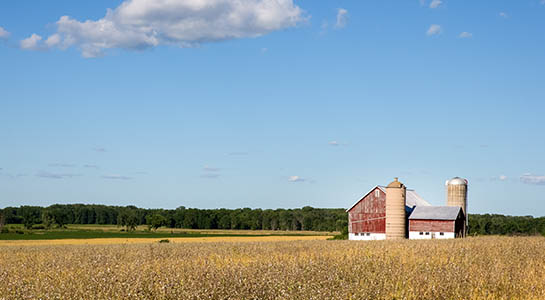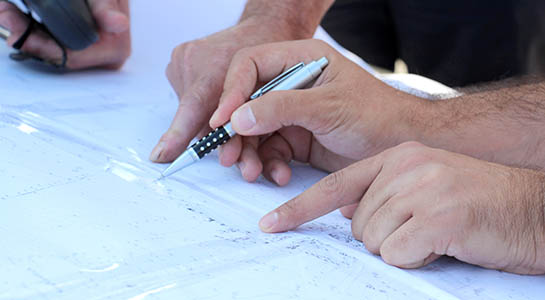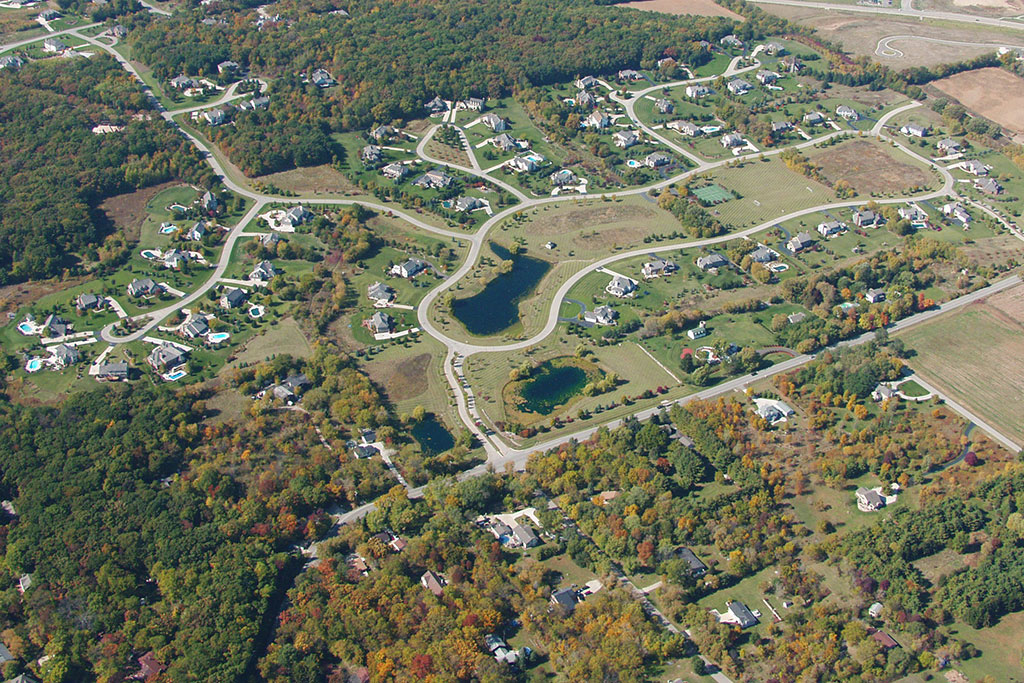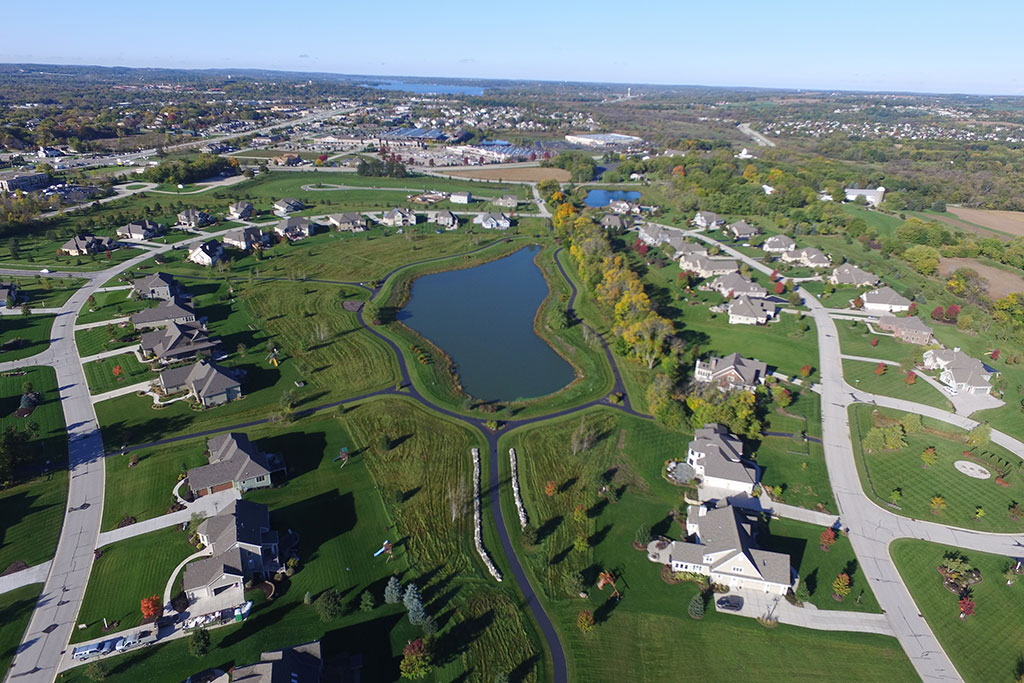Watching the deer along the tree line at dusk, strolling through the walking trails amidst coneflowers, or simply listening to the fall breezes flow through the prairie grasses as you sip your cup of coffee on the patio…those are the sights and sounds of conservation development. From embracing the natural elements of a parcel of land to ensuring wildlife and natural vegetation are protected for generations to come…that’s the Siepmann Difference. It started with early PUD’s (Planned Unit Development) like Willaura in Brookfield and Woodfield Village in Merton and evolved into modern developments along the Ice Age Trail like Hawksnest in Delafield or the Preserve at Hunters Lake in Ottawa. Our approach to conservation development embraces Southeast Wisconsin’s finest natural resources.

Benefits of Conservation Development
More than Just Open Space Land Planning
Creative & Artistic Approach to Land Planning
The Benefits of Conservation Development
“Nature Created It. We Just Made it Home.”
Conservation Design…Taking Green Space Much Further.
Lots for Sale With More Than Just Open Space
Many developers tout the concept of open or green space in their subdivisions. While embracing this principal is a good concept, Siepmann neighborhoods set the bar higher. At Siepmann Realty, we believe that the concept of open space must extend further, conserving natural elements of the land itself, while developing areas for plant and animal wildlife to thrive in and around the community. Here’s some of the key differences:
Other Developer’s Open Space Plan
Siepmann Realty Conservation Design
Streets & Lots First
Subdivision design starts with street locations, lot placement, and recreational areas, viewing green space as an element that fits between or around the homesites as an added value.Streets & Lots Last
Our Conservation style planning starts with the natural features of the land by identifying topography, vegetation, woodlands, wetlands, and other elements that should be preserved, then homesites are positioned between or around these elements.Water Management
Stormwater retention ponds are designed after the streets giving them unnatural geometric shapes with sterile vegetation manicured to the waterline.Water as a Resource
While more complex to construct and manage, our stormwater management facilities are also designed as complete biosystems for ongoing wildlife and natural water management, not just stormwater.Unmanaged Vegetation
While “natural” vegetation could be considered good, it can also include many invasive species, which if not managed, can become a nuisance to the biosystem.Managed Vegetation
We prefer the use of the term ``managed vegetation,`` protecting existing trees and fostering the growth of prairies, wildflowers, and grasses which add value instead of runaway, invasive growth in our communities.Over Manicuring
Manicuring of entire open spaces is labor intensive and costly to the environment as chemical applications are left unchecked and released into environmentally sensitive areas.Minimal Maintenance
Minimized manicuring allows for less chemical application and more natural areas. A win-win. Less costly to you, the homeowner, and the environment.Nature as an Afterthought
Natural features of the land are destroyed in conventional developments because they were not incorporated into the land plan.Nature is at the Center
While it is more costly, conservation development values our natural resources and protects the overall property value over time.Inaccessible Neighborhood Facilities
Community facilities are located an inconvenient drive from the neighborhood.Community Gathering Areas
Common amenities like rec centers, pathways, and playgrounds are attractive gathering areas which alleviate the need for the municipality to purchase and develop these facilities plus these are great places to meet your neighbors.Conservation Design…Taking Green Space Much Further.
Lots for Sale With More Than Just Open Space
Many developers tout the concept of open or green space in their subdivisions. While embracing this principal is a good concept Siepmann neighborhoods set the bar higher. At Siepmann Realty, we believe that the concept of open space must extend further, conserving natural elements of the land itself, while developing areas for plant and animal wildlife to thrive in and around the community. Here’s some of the key differences:
Other Developer’s Open Space Plan
VS.
Siepmann Realty Conservation Design
STREETS & LOTS FIRST

STREETS & LOTS LAST
WATER MANAGEMENT

WATER AS A RESOURCE
UNMANAGED VEGETATION

MANAGED VEGETATION
OVER MANICURING

MINIMAL MAINTENANCE
FEW COMMON AMENITIES

COMMUNITY GATHERING AREAS
Embracing Conservation Development
Our Land Planning Process

DISCOVER NATURE:
Developer and Land Planner walk the land to inventory each and every feature: natural resources, soils, topography, vegetation, and historic features on the property.

PLAN OPEN SPACES:
Integrate the natural resources into protected open spaces in an initial sketch of the neighborhood layout.

PLAN AMENITIES:
Plan for community amenities based on natural and recreational opportunities.

CIVIL ENGINEERING:
Engage a civil engineer to design roadways and utilities, stormwater and grading plans.

FINALIZE DESIGN:
Finalize development, landscape design, and homesite placement based on developer, land planner, and civil engineer input.

APPROVALS:
Gain appropriate government and regulatory entitlements for development.
Our Conservancy Efforts in Southeast Wisconsin
Conservation Values & Family Legacies

Considering Selling Your land?
Our goal is to foster relationships with local landowners so that we may develop neighborhoods to be proud of. It’s about respecting a property that has passed down through generations and the hard work that has come with it. When that chapter ends, it’s about embracing the old farm house, silo, or barn in our conservation style of land development. Conserving history, conserving natural areas, and conserving the family legacy are paramount to our land plans.

Our Work With the Waukesha County Land Conservancy
The mission and passion of the Waukesha County Land Conservancy is to protect environmentally significant lands in Waukesha County. Like his father, Ron, one of the founding members of the Conservancy, Jim knows his responsibility for our environment goes far beyond his role on the Board of Directors at the Conservancy or his work at Siepmann Realty Corporation. Partnering with the Waukesha County Land Conservancy, we have voluntarily established many easements which cooperatively protect lands with significant agricultural, historic, scenic, and wildlife habitat value to our region.


